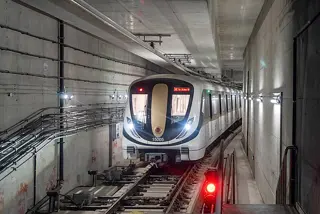 The expansion of the Chennai Metro Rail is driving growth in the city’s real estate sector, making connectivity a key driver for property demand. This major infrastructure project—now in its Phase 2—is improving accessibility and changing urban mobility, opening up lucrative opportunities for investors and homebuyers. Let's look at the dynamic impact of this metro expansion on Chennai’s residential and commercial markets.
The expansion of the Chennai Metro Rail is driving growth in the city’s real estate sector, making connectivity a key driver for property demand. This major infrastructure project—now in its Phase 2—is improving accessibility and changing urban mobility, opening up lucrative opportunities for investors and homebuyers. Let's look at the dynamic impact of this metro expansion on Chennai’s residential and commercial markets.
Key Areas Benefiting from Metro Connectivity
Suburban areas like Thirumazhisai, Kelambakkam, Porur, and Madhavaram are popular landmark for real estate in upcoming situation. Phase 2 plans, including the 26.1 km corridor from Thirumazhisai to Poonamallee, aim to cut travel times significantly—for example, reducing the commute from Chennai Airport to Central Station from over an hour to just 30 minutes. This efficiency is revitalizing neighborhoods once seen as remote.
Factors Fueling Real Estate Surge
Property Value Appreciation
Properties within a 1-km radius of metro stations see price hikes of 20–30%, according to market experts. For example, Phase 1 metro routes post-2015 saw property values surge by 15–33% in affected areas. Prime locations like Anna Salai and Guindy continue to attract commercial investors due to their strategic alignment with metro routes.
Enhanced Residential Appeal
Homebuyers favor metro-linked neighborhoods for reduced traffic exposure and easy access to city hubs. Gated communities like SOBHA Arbor (Porur) and SOBHA Conserve (Pudupakkam) show how developers are capitalizing on this trend, blending residential plots with eco-friendly amenities. Families and professionals increasingly prefer suburbs like Thirumazhisai, drawn by trouble-free commutes and modern amenities in new projects.
Commercial Growth Catalysts
Metro corridors are boosting demand for retail spaces and mixed-use developments. As accessibility improves, commercial hubs are expanding into secondary areas, creating opportunities for co-working spaces, malls, and retail kiosks along urban peripheries.
Strategic Opportunities for Investors
Integrated Townships
Developers are focusing on self-sufficient communities near metro routes, combining residential, commercial, and recreational zones. These projects align with Chennai’s goal of sustainable urbanization, appealing to ecologically conscious buyers and long-term investors.
Reviving Underdeveloped Areas
The metro is spotlighting 436-acre Siruseri and other peripheral regions, enabling large-scale development that balances affordability with connectivity. Investors are eyeing these areas for high-yield opportunities, especially given Tamil Nadu’s status as a top infrastructure spender in India.
Environmental and Economic Benefits
The metro’s reduction in reliance on private vehicles cuts pollution and supports the city’s push toward eco-friendly living. Additionally, the expansion fosters job creation across construction, retail, and hospitality sectors, bolstering local economies and attracting external investments.
The Road Ahead: Challenges and Potential
While rising demand promises returns, concerns like land scarcity and infrastructure bottlenecks could impact growth. Strategic partnerships between developers and the Chennai Metro Rail Limited (CMRL) to prioritize transit-oriented developments will likely dominate future planning.
The Chennai Metro expansion isn’t just reshaping transportation—it’s cementing the city as a beacon of integrated, sustainable growth. For stakeholders—from investors to families—the confluence of connectivity and foresight offers unparalleled opportunities in India’s real estate landscape.